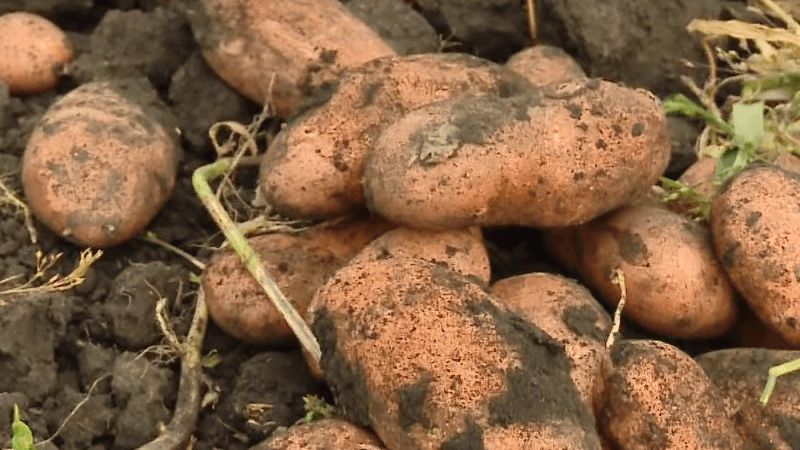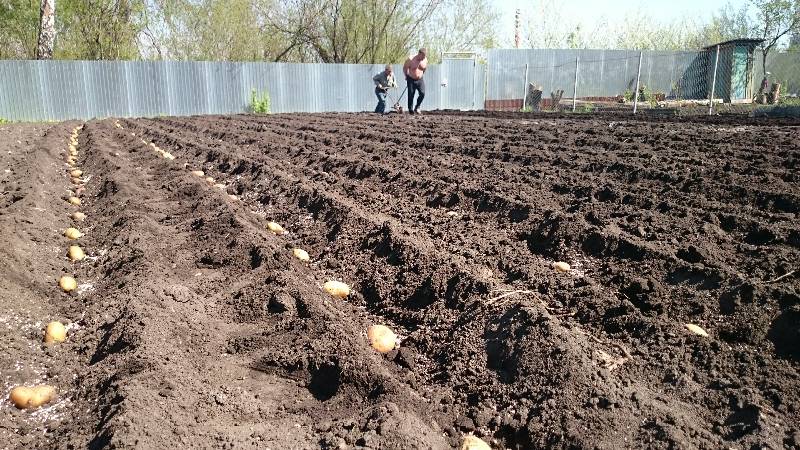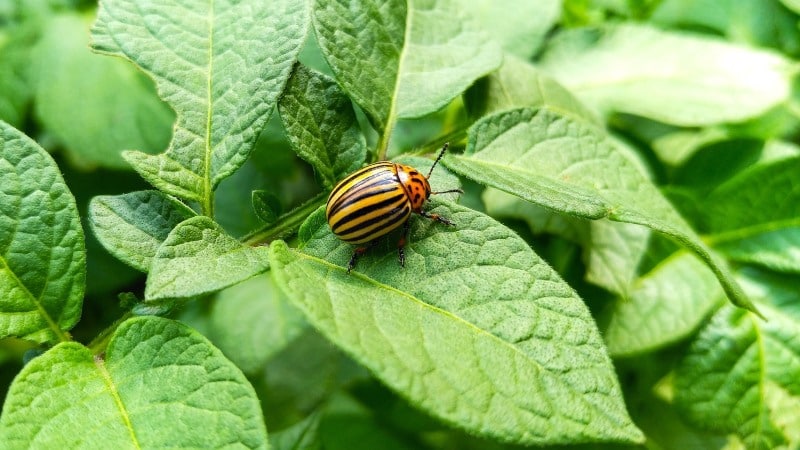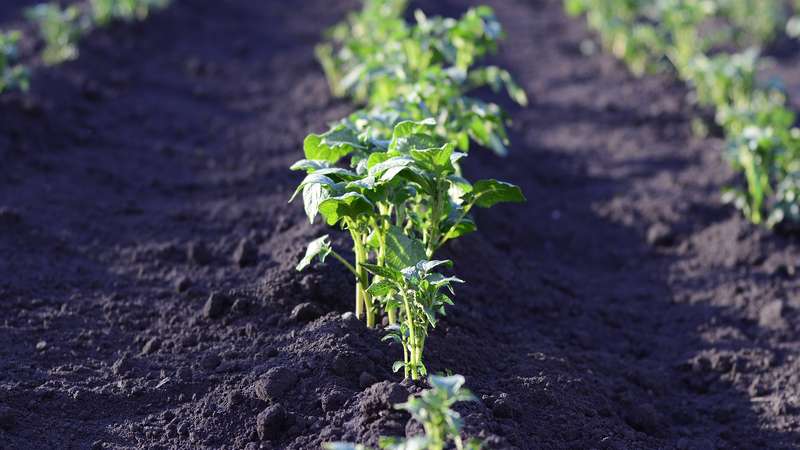Unpretentious potato variety “Early Morning”: even beginners can grow it
Early Morning Potatoes are an early-ripening variety for table use. Its advantages attract both garden owners and large agricultural enterprises. Taste and product indicators are rated very highly by experts. Even a beginner can cope with growing this unpretentious variety.
Description of the variety
Early Morning potatoes are undemanding to care and soil. The variety is drought-resistant and is capable of producing two harvests per season.
Tall bushes, intermediate type; The stem is thick and erect. The plant is abundantly covered with medium-sized leaves. There are many hard hairs on the surface of the leaf blades. During the flowering period, corollas formed from lilac flowers form on the bushes.

Origin and development
Early morning potatoes were bred by Chelyabinsk breeders. To obtain this variety, scientists used Morning potatoes. Initially, they planned to increase taste and yield, but additionally paid attention to the plant’s immunity to diseases and pests. The Morning Early variety was included in the state register of the Russian Federation in 2016.
Chemical composition, trace elements and vitamins
It is almost impossible to imagine human nutrition without potatoes. If you eat a few of these vegetables a week, your body will be provided with all the necessary beneficial elements. 100 g contains 75 calories, of which 0.1 g fat, 1.9 g protein, 16.5 g carbohydrates and 14.2 g starch. Potatoes also contain:
- water;
- alimentary fiber;
- B vitamins - B1, B2, B3, B6, B9;
- vitamins C, PP, H;
- calcium;
- phosphorus;
- magnesium;
- iron;
- potassium;
- silicon;
- folic acid;
- sodium;
- chromium;
- selenium;
- iodine;
- tin;
- nickel;
- aluminum;
- cobalt;
- molybdenum;
- vanadium.
Ripening period
Early Morning potatoes are early varieties. The period from the appearance of full shoots to harvest takes about 60-75 days, but the first digging can be done already on the 45th day.
Productivity
Up to 10 tubers weighing 100-190 g are formed under one bush. Per hectare landings Vegetable growers harvest up to 250 centners of crops.
Disease resistance
The Early Morning potato variety has strong immunity to diseases and pests such as:
- Potato cancer. This is a fungus that cannot survive drought or cold. Therefore, in the southern and northern regions, cancer does not affect plants. Zoosporangia of this fungus can live in the soil for many years, waiting for suitable conditions.
- Common scab. This fungus infects the vegetables themselves, which subsequently leads to the loss of taste and commercial characteristics of potatoes. The tubers taste bland and do not last long. The disease is difficult to identify, since in the initial stages it does not manifest itself in any way and does not affect the above-ground parts of plants.
- Colorado beetle. Adult pests and their larvae feed not only on green potato shoots, but also on tubers, especially in spring. The Colorado potato beetle larva is an insect with a curved back and a flattened bottom. The pest is large in size - up to 16 mm. As the larva grows and develops, the color of its shell changes from orange-red to orange with a yellowish tint.A characteristic difference between the Colorado potato beetle larvae is the presence of two rows of black dots on the sides.
Characteristics of tubers, description of appearance
Potatoes have an oval shape and a smooth surface. The peel is red in color, dense, with a mesh structure. When cut, the flesh is light yellow. The eyes are small and shallow, which simplifies the cleaning process.
Regions for cultivation and climate requirements
Early morning performs well when grown in various climatic conditions. The variety is intended for the Volga-Vyatka, Ural, East Siberian and Far Eastern regions, but it is successfully grown throughout almost the entire territory of Russia, Belarus and Ukraine.
Advantages and disadvantages of the variety
Advantages of the variety:
- stable and high productivity;
- ease of care;
- the ability to grow potatoes in almost any climatic conditions;
- strong immunity;
- excellent taste and product quality;
- long shelf life;
- the ability to harvest two harvests per season;
- transportability of tubers.
Gardeners cite the disadvantages of this variety as the need to use fertilizers before planting and sensitivity to some diseases.
Difference from other varieties
As mentioned above, early morning can produce two harvests per season. Potatoes grow well and produce abundant tubers even in unfavorable climatic conditions. Also, this variety does not require special attention. The main distinguishing feature of this potato is its extreme resistance to the Colorado potato beetle. The leaves have hard pubescence, which the pest really does not like.
Features of planting and growing
The key to obtaining a bountiful harvest is compliance with agrotechnical rules when planting potatoes and organizing proper care. It is also important to choose a suitable location, properly prepare the soil for planting and plant the potatoes on time.
Preparation
Before planting, seed material is prepared. Even if the potatoes have been stored correctly, they are dried under the sun and the spoiled seeds are discarded. For sowing, tubers weighing 50-60 g are used.
To prepare the tubers for planting, the planting material is germinated in 3 liter jars. To do this, fill the container with potatoes, place it on the windowsill and regularly turn it for uniform lighting. Thanks to this technique, the tubers will shrink slightly in diameter and produce thick, strong sprouts.
Soil requirements

The soil for potatoes has been prepared since the fall. The soil is dug up to 20-30 cm and fertilized. To make the soil lighter, fertilizers are applied in the spring during loosening. The area is cleared of weeds that slow down the growth of the crop.
Dates, scheme and rules of planting
Potatoes are planted in early or mid-April, when the air temperature reaches +10...+15°C. Otherwise, the seedlings may die from return frosts.
The optimal planting pattern is 60x40 cm. Holes are dug approximately 10-15 cm deep. Planting holes are prepared 1-2 days before the intended planting.
Features of cultivation
Well-lit areas are allocated for potatoes. There should be no buildings or tall trees shading the bushes nearby. In partial shade, the Morning Early variety also takes root, but the tubers will be smaller in size.
Watering mode and loosening
During the entire growing season, potato bushes are watered three times:
- after the formation of stems on the soil surface;
- after the formation of inflorescences;
- immediately after the tops wither.
Young bushes are not irrigated. It is also undesirable to moisten them after flowering in order to increase the shelf life of the potatoes.
On a note. Frequent watering of plants increases the risk of developing late blight.
For the Morning Early variety, the top layer of soil is regularly loosened. This promotes root respiration. The earth is carefully loosened after rains and waterings.
Top dressing
To obtain a high-quality harvest, fertilizers are added to the soil. Mineral supplements are added carefully, as there is a risk of making a mistake with the dosage:
- In autumn, when preparing the soil, use 5-7 kg of rotted manure and 15 g of potassium sulfate per 1 square meter. m.
- In the spring, before planting potatoes, 1 sq. m of soil add half a bucket of peat manure or compost. Also add 20 g of ammonium nitrate, potassium sulfate and 30 g of “Nitrophoska” per 1 sq. m.
- During the growing season, before hilling, 1 sq. m use a solution of a bucket of water and chicken droppings in a ratio of 1:10. Plantings are watered with fertilizer.
Early Morning potatoes, growing on fertile soils, do not need fertilizers.
Weeding and hilling
Weeds take away moisture, nutrients and sunlight from the potato crop. Therefore, the beds are weeded several times during the season. This event significantly improves the condition of the plants.
Hill up potatoes twice a month. The procedure helps improve soil aeration and creates space for the successful development of potatoes. If you ignore this procedure, the tops will fall off, increasing the risk of diseases and pest attacks.
Disease and pest control

Early morning potatoes are susceptible to the following diseases and pests:
- Late blight. The disease manifests itself as brown spots, first on the foliage, and then gradually spreads to the stem. In hot weather, the affected plant begins to dry out, and in rainy weather, it begins to rot. The tubers on which late blight has settled deteriorate right in the ground. A layer of dry, rotting tissue forms under the peel. The disease is combated with the drug “HOM” (40 g per 10 liters of water) by spraying the plantings.
- Golden nematode. This is a harmful worm that penetrates tubers and feeds on their juice. The plant begins to dry from the lower leaves, the tops darken, and the bush withers. White and golden bubbles are visible on the vegetables. These are fertilized females that are about to enter the cyst stage. Chemicals are toxic, so they are used only in advanced stages. “Bazudin” is used to control pests. It is prepared and sprayed according to the instructions, taking precautions.
- Wireworm. This pest is a yellow-brown larvae 2-3 cm long with a dense cover. An adult is a black beetle with an oblong body up to 5 cm long. The pest is destroyed with nitrogen-containing fertilizers, for example, ammonium chloride (30 g per 1 sq. m), ammonium nitrate (20 g per 1 sq. m), ammonium sulfate (apply 30 g per 1 sq. m). The products have a pungent odor that is unpleasant to pests. For preventive purposes, the drug "Aktara" is used. It is dissolved in water to treat the tubers before planting (1.4 g per 10 liters of water).
To repel pests, add wood ash, onion peel or mustard powder to the holes when planting.
Difficulties in growing
Many gardeners grow potatoes in one plot for 10-15 years in a row. It is very difficult for summer residents to follow the rules of crop rotation due to the small land areas.There is a simple and effective way out of this situation.
At the first opportunity, they purchase new seeds or exchange planting material with their neighbors. Each seed potato develops much better in a new place.
Harvest and storage
If harvesting is carried out in a small area, potatoes are dug up with a shovel or pitchfork. In farmers' fields they use a walk-behind tractor or a combine harvester.
How and when to collect
Potato harvesting begins after the tops dry out. At this time, the tubers begin to accumulate starch and other beneficial elements that create the creamy taste and aroma of potatoes. They start collecting around mid-August.
Advice. A week before harvesting, it is recommended to cut off the tops and mow down weeds, if there are any on the site.
Storage features and keeping quality of the variety
To preserve the maximum amount of harvest, the tubers are sorted before being stored in storage. Spoiled and damaged items are immediately removed and disposed of. Beautiful and healthy medium-sized vegetables are selected for planting; next year they will serve as seed material. The remaining tubers are placed in nets or boxes and placed in a cellar or basement. Potatoes are also stored in bulk.
The air humidity in the room should be at the level of 70-85%, which is determined using a hygrometer. Increased dampness causes mold to appear. To prevent this from happening, the room is ventilated or dried using heating devices. The marketability of tubers is 69-88%, keeping quality is 92%.
Advice from experienced gardeners

To keep potatoes healthy, you need to:
- remove plant debris and diseased tubers from the site;
- dry the collected vegetables well, in the open air or under a canopy (in cloudy weather);
- sort the tubers after proper drying and then place them in storage;
- do not leave infected potatoes over the winter;
- use only high-quality seed material for planting;
- plant potatoes annually in different places;
- Before planting, treat the seeds with “Agate” or “Immunofitsit”.
Reviews
The opinions of summer residents confirm that even a beginner can grow potatoes early in the morning. This new variety is becoming increasingly popular. With proper care, you can get a decent harvest in the shortest possible time.
Alexey, Rostov: “I’ve been gardening for 10 years in a row. Last year I bought early morning potato seeds from a neighbor and planted them. What can I say. Regular potatoes. Productivity is normal. The vegetables taste great. But I would not say that this is some kind of innovative variety. For me, it’s no better than the good old classics.”
Evgeniy, Izhevsk: “I always try to grow new potato varieties. I immediately assessed the early morning positively. The culture pleases with its resistance to external conditions and ease of care. However, to obtain an abundant and high-quality harvest, he treated the seeds before planting. The plants did not get sick. The vegetables taste wonderful. I liked the Early Morning potatoes; the description of the variety and the photo surprised me. I advise everyone!"
Read also:
Is it possible to eat potatoes if you have high cholesterol?
Conclusion
By growing early potatoes for yourself or for sale, you will not only enrich your menu with an environmentally friendly, tasty and healthy product, but also replenish your family budget.Caring for potatoes early in the morning is simple: just feed them on time, then they will be fully filled with all useful substances. These vegetables boil, baked, fried, added to cold and hot dishes, used as a filling in combination with spices. The main thing is to strictly follow the rules of care and storage of tubers.